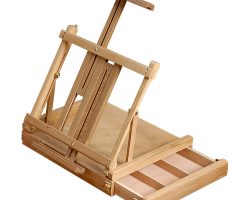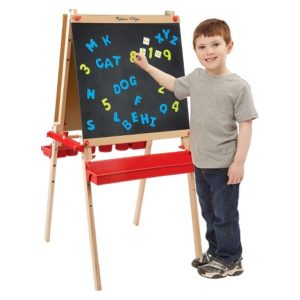How to Get Practical Craft Experience
Turning hobbies into full time jobs is the dream of many casual crafters. It takes time, creativity and persistence. Another key element is experience. Rudimentary knowledge of your art / craft isn’t good enough if you’re selling goods to paying customers.
You need to have the knowledge to put out a quality product at a price that your customer will pay while still making enough money to cover both your business and personal expenses. Just starting out and not sure how to get that knowledge? Here are my suggestions for getting good, practical experience in running a craft business.
Working for Another Craft Business
Years ago when I first started giving seminars on starting a new business, getting good practical experience working for another similar type business was my number one suggestion. It still is. This is the best and most ideal of situations.
Working for another crafter not only teaches you the specific skill, it exposes you to the complete picture of the business aspects of selling crafts. Definitely, having prior experience working for a business in the same craft discipline to the one you want to start will be one of your major keys to success.
However, I know that for many, unless you are a student looking for an internship, this isn’t an option. You’re working 40 hours plus at your day job and the last thing you want to do is get a part-time job working for someone else in your craft field. Honestly, fast forwarding to today, it would be a difficult option for me to achieve too. So, what to do if putting in hours working for another arts / crafts designer just can’t be done?
Practice, Practice, Practice
It’s trite but practice is a very necessary part of gaining design and fabrication experience. Do you ever watch Project Runway? What always happens at the start of each show? These are trained designers with years of experience in the field, yet after they are given an assignment, they don’t just get out a pair of shears and start hacking up fabric.
They think about their particular design, sketch it out, carefully consider the right fabric and use muslin to make patterns prior to cutting the actual garment fabric. Sometimes they have to halt operations mid-stream when they see their design just isn’t going to pan out. As an inexperienced crafter, these are the basic steps you should follow – sometimes over and over and over again until a design or technique is totally worked out.
Until you’ve had a lot of practice, it’s really hard to have a 100% grasp on whether the materials you want to use are adaptable to your design. Also, it can take numerous prototypes to breakdown design elements into logical construction steps. Remember, developing well-honed techniques from hours of experimentation is necessary prior to announcing yourself to the world as a serious craft businessperson.
Yikes, all that material – it can be expensive – that’s why the clothing designers use muslin first. If possible, use the equivalent of muslin for your design prototypes.
Take Craft Business Courses or Seminars Tailored to Your Field
While this is a necessary part of running a business for experienced craft business owners, it’s exponentially important for the inexperienced. You should already have subscribed to and be reading trade publications. There are numerous craft seminars given convention style each year, hi-lighted in these publications, providing great information on many different craft related business topics.
Usually spanning two to three days, a variety of topics are normally covered and you’ll be able to pick and choose between the seminars you want to attend. If the seminars aren’t within driving distance, you’ll have the additional burden of airfare and lodging. However, lacking the time to get on-the-job practical experience, this is the next best thing.
Joining Craft Professional Trade Associations
What happens when you go out to lunch with people you work with? Don’t you invariable end up talking about your jobs – maybe getting the inside scoop on pending events? Well, that’s exactly the sort of interaction you’ll get when you join a local trade association. Attending these meetings is a great way to get experience vicariously as you find out about new tools, techniques, suppliers and legalities specific to your craft.
Getting experience working in the field is invaluable. You’ll have the priceless opportunity to see how an established business maneuvers around problems beyond their control and deals with supply, labor and customer issues. Lacking that opportunity, put aside time to practice your craft. Pair this with keeping on top of developing issues in your business by joining trade organizations and attending craft related seminars.


